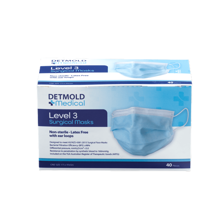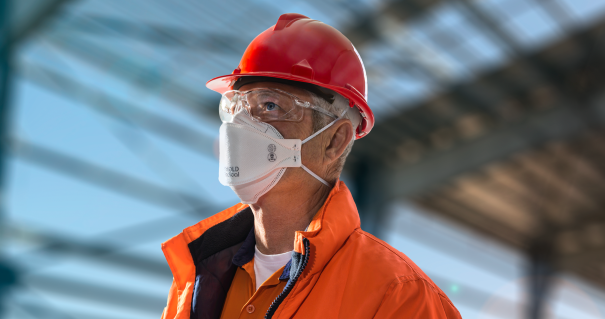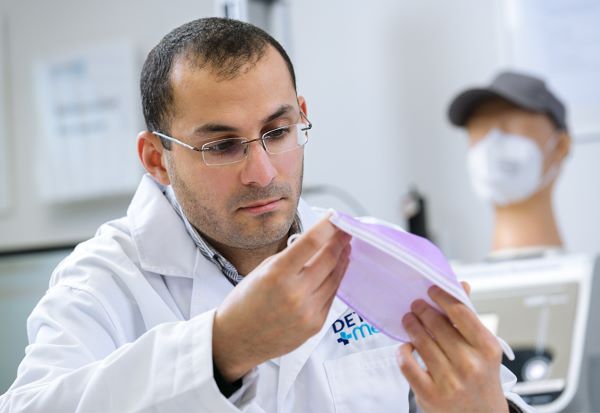Maintaining compliance with relevant respiratory protective equipment (RPE) standards isn’t a one-off. Instead, it requires an ongoing commitment to worker safety in order to protect both people and productivity.
As industries evolve and risks change, continuous improvement in workplace RPE programs is essential to maintain compliance and keep your workers safe. Read on as we discuss the steps you need to take to maintain compliance with evolving RPE standards.
Why continuous vigilance matters in RPE compliance
RPE is a form of personal protective equipment (PPE) that’s specifically designed to protect the wearer from airborne hazards. RPE standards outline the relevant requirements for the performance, selection, use and maintenance of respirators. Two key examples of RPE standards include:
- Australian/New Zealand Standards AS/NZS 1716:2012 (performance requirements for RPE), and
- Australian/New Zealand Standards AS/NZS 1715:2009 (selection, use and maintenance).
These standards are designed to ensure that respirators deliver effective protection against airborne contaminants, match the nature of the hazard and are applied correctly through established procedures, such as fit testing and training. Regular updates ensure these standards remain aligned with current scientific knowledge and regulatory guidance.
When it comes to RPE standards, it’s important to understand that compliance isn’t static. RPE standards are regularly updated to reflect the latest information and recommendations. It’s for this reason that it’s essential to remain vigilant and complete ongoing reviews, training and checks as part of an effective workplace RPE program. This vigilance is underpinned by three key pillars: fit testing, maintenance and auditing.
Fit testing: The foundation of effective RPE
Fit testing ensures that a respirator forms an effective seal against the wearer’s face, preventing air leaks. Without a proper fit, the respirator cannot provide full protection, potentially exposing the wearer to harmful contaminants and associated health risks.
Workers are required to pass a fit test before using a tight-fitting respirator for the first time. However, fit testing should also be repeated regularly:
- Each time a new respirator make or model is introduced, and
- Whenever changes to a worker’s facial features could affect the seal (such as significant weight loss or gain).

All fit testing must be performed by a qualified person, in accordance with one of the two approved methods outlined in AS/NZS 1715:2009: qualitative or quantitative fit testing.
Upon the completion of each fit test, the person conducting a business or undertaking (PCBU) should keep a written record for each worker that details the:
- Method of fit test performed,
- Make, model, style and size of respirator tested, and
- Date and result of the test.
Maintenance: Keeping RPE performing at its best
Proper maintenance is crucial for ensuring RPE continues to provide the intended level of protection. The aim is to keep the equipment in a condition that preserves the same level of protection and performance it had when originally manufactured.
Anyone involved in the selection, use, storage and maintenance of respiratory protection requires comprehensive RPE training that covers all aspects of using and maintaining RPE, including cleaning, inspection and replacement protocols.
RPE should be checked for any signs of damage before each use and during the cleaning process. While the manufacturer guidelines should detail the correct cleaning and storage protocols for the RPE, improper storage or damaged components can lead to non-compliance, leaving workers at risk of contamination.
Regular audits: Ensuring compliance and continuous improvement
Regular RPE audits help to identify potential gaps in compliance and opportunities for improvement. These audits can be used to review fit testing records, maintenance logs and training attendance. Whether you engage a third-party auditor or complete periodic audits internally, these systems help to ensure your RPE program is aligned with the latest national standards.
Beyond identifying gaps, effective RPE audits should generate data-driven insights that guide ongoing improvement. Tracking metrics such as fit test pass rates, maintenance completion rates and incident reports allows organisations to identify patterns and respond proactively to emerging risks.
This data-informed approach turns audits from a compliance exercise into a living system of improvement, strengthening both safety outcomes and alignment with RPE standards.
Building a culture of continuous RPE compliance
Maintaining compliance is more than just a box-ticking exercise. It’s about fostering a workplace culture where safety and vigilance are part of everyday behaviour. Even the most advanced RPE can only perform effectively when it’s used and maintained correctly.
From offering ongoing RPE training to encouraging open communication and feedback, nurturing a workplace culture that values vigilance starts with leadership commitment. When managers consistently demonstrate attention to RPE standards through regular audits, visible participation in fit testing and reinforcement of training, employees recognise that compliance is a natural part of the workplace.
Support your compliance efforts by partnering with Detmold Medical
Beyond adhering to the latest RPE standards, compliance is critical for protecting both people and productivity in the workplace. As an Australian owned manufacturer of certified RPE, Detmold Medical designs and supplies a comprehensive range of high-quality, compliant face masks and respirators.
Explore the range today or get in touch with our customer service team to see how we can help keep your workplace safe and compliant.






